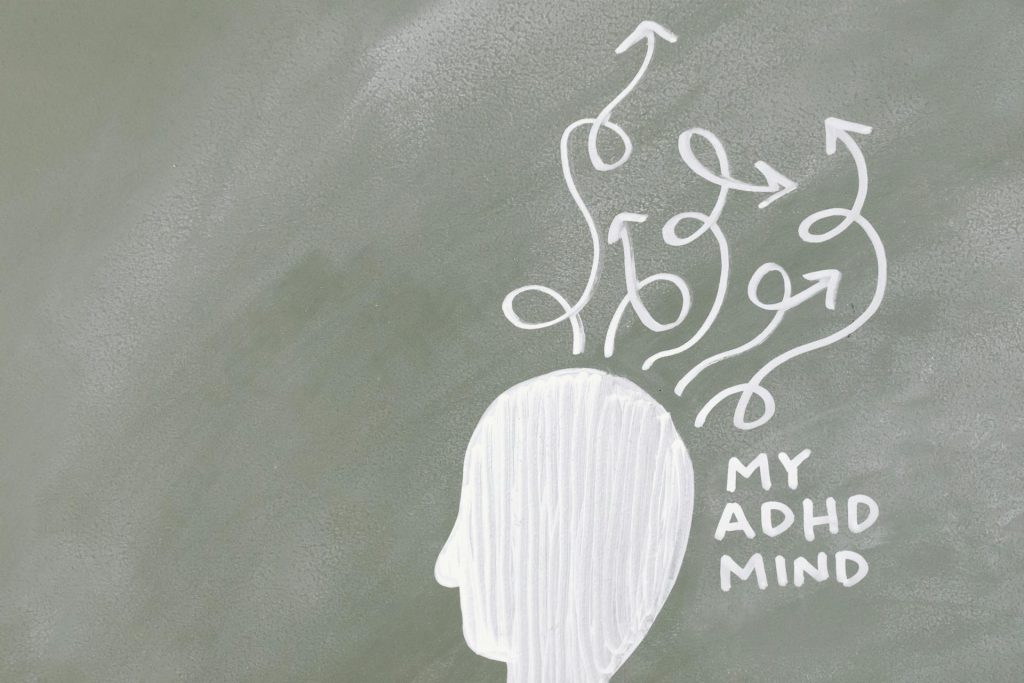What is Attention Deficit Hyperactivity Disorder?
Everything you need to know
ADHD: Presentation and Characteristics
Attention-Deficit/Hyperactivity Disorder (ADHD) presents a diverse range of characteristics, impacting individuals across various life stages. Understanding these presentations is crucial for accurate diagnosis and effective management. ADHD is categorized into three primary presentations: predominantly inattentive, predominantly hyperactive-impulsive, and combined.
The predominantly inattentive presentation is marked by significant difficulties in sustaining attention. Individuals may struggle to follow instructions, organize tasks, and maintain focus on activities. They are often easily distracted, forgetful, and prone to making careless mistakes. This presentation can manifest as difficulty completing tasks, avoiding activities requiring sustained mental effort, and losing items necessary for tasks. In academic or professional settings, this can lead to underachievement and frustration.
Time to feel better. Find a mental, physical health expert that works for you.
The predominantly hyperactive-impulsive presentation is characterized by excessive fidgeting, restlessness, and difficulty waiting their turn. Individuals may interrupt conversations, blurt out answers, and engage in risky behaviors without considering the consequences. They may struggle to remain seated, talk excessively, and have difficulty engaging in quiet activities. This presentation can lead to social difficulties and impulsive decision-making.
The combined presentation, the most common type, involves a combination of both inattentive and hyperactive-impulsive symptoms. Individuals may exhibit a mix of these characteristics, presenting challenges in both focus and behavior. This presentation can lead to significant impairment in various areas of life, including academic, professional, and social functioning.
Beyond these core symptoms, individuals with ADHD may experience emotional dysregulation, which involves difficulty managing emotions and heightened sensitivity. This can manifest as irritability, frustration, and emotional outbursts. Executive function deficits are also common, impacting working memory, planning, and problem-solving skills. These deficits can lead to challenges in organization, time management, and task completion.
ADHD symptoms can vary in severity and presentation across different age groups. In children, hyperactivity may be more prominent, while in adults, inattention and executive function deficits may be more prevalent. Understanding these variations is crucial for tailoring interventions and support.
It is important to note that ADHD is not simply a matter of being easily distracted or having excess energy. It is a complex neurodevelopmental disorder that impacts brain function and behavior. Accurate diagnosis and appropriate support are essential for individuals with ADHD to thrive.
ADHD: Validity and Evidence
The validity of Attention-Deficit/Hyperactivity Disorder (ADHD) as a legitimate neurodevelopmental disorder is supported by a wealth of scientific evidence. Decades of research have consistently demonstrated the neurological, genetic, and behavioral underpinnings of ADHD, dispelling myths and misconceptions.
Neuroimaging studies have revealed structural and functional differences in the brains of individuals with ADHD. These studies have shown alterations in the prefrontal cortex, which is responsible for executive functions such as attention, planning, and impulse control. These findings provide objective evidence of neurological differences associated with ADHD.
Genetic studies have consistently shown a high heritability rate for ADHD, indicating a strong genetic component. Research has identified specific genes associated with neurotransmitter systems, such as dopamine and norepinephrine, which play a crucial role in attention and executive functions. These genetic factors contribute to the biological basis of ADHD.
Behavioral studies have documented consistent patterns of inattention, hyperactivity, and impulsivity in individuals with ADHD. These studies have utilized standardized diagnostic criteria and assessment tools to ensure reliable and valid measurements of ADHD symptoms. Longitudinal studies have shown that ADHD symptoms can persist into adulthood, highlighting the chronic nature of the disorder.
Clinical trials have demonstrated the effectiveness of various treatments for ADHD, including medication and behavioral therapies. Stimulant medications, for example, have been shown to improve attention and reduce hyperactivity in individuals with ADHD. Cognitive Behavioral Therapy (CBT) has also been shown to be effective in managing ADHD symptoms and improving coping skills.
The validity of ADHD is further supported by its inclusion in major diagnostic manuals, such as the Diagnostic and Statistical Manual of Mental Disorders (DSM-5) and the International Classification of Diseases (ICD-11). These manuals provide standardized diagnostic criteria, ensuring consistency and reliability in the diagnosis of ADHD.
Despite the strong evidence base, misconceptions about ADHD persist. It is important to emphasize that ADHD is not a result of poor parenting, laziness, or lack of intelligence. It is a legitimate neurodevelopmental disorder with biological and genetic underpinnings.
ADHD: Etiology
The etiology of Attention-Deficit/Hyperactivity Disorder (ADHD) is complex and multifactorial, involving a combination of genetic, environmental, and neurological influences. While the precise mechanisms are not fully understood, research has identified several key contributing factors.
Genetics play a significant role in the development of ADHD. Studies have shown that ADHD has a high heritability rate, meaning that it tends to run in families. Specific genes associated with dopamine and norepinephrine neurotransmitter systems have been implicated in ADHD. These neurotransmitters are crucial for attention, motivation, and executive functions. Variations in these genes can affect the way these neurotransmitters function in the brain, contributing to ADHD symptoms.
Environmental factors can also contribute to ADHD. Prenatal exposures, such as maternal smoking, alcohol consumption, and exposure to toxins, have been linked to an increased risk of ADHD. Complications during birth, such as premature birth or low birth weight, may also play a role. Exposure to environmental toxins, such as lead, during early childhood has also been suggested as a risk factor.
Neurological factors are significant in ADHD. Brain imaging studies have revealed differences in brain structure and function in individuals with ADHD, particularly in the prefrontal cortex, which is responsible for executive functions. These differences can affect attention, impulse control, and working memory. Neurotransmitter imbalances, particularly in dopamine and norepinephrine, are also believed to contribute to ADHD symptoms.
It is important to note that vaccines have been thoroughly investigated and have not been found to cause ADHD. This misconception has been debunked by numerous scientific studies.
Risk factors for ADHD include having a family history of ADHD, prenatal exposure to toxins, premature birth, and exposure to environmental toxins during childhood. Understanding these risk factors can help identify individuals who may be at increased risk of developing ADHD.
Ongoing research continues to explore the complex interplay of genetic, environmental, and neurological factors that contribute to ADHD. This research aims to gain a deeper understanding of the underlying mechanisms of ADHD and develop more effective prevention and treatment strategies.
Treatment Modalities
Effective management of Attention-Deficit/Hyperactivity Disorder (ADHD) typically involves a comprehensive, multimodal approach, tailored to the individual’s specific needs and symptoms. Treatment modalities encompass medication, behavioral therapies, lifestyle adjustments, and educational or workplace accommodations.
Medication is a cornerstone of ADHD treatment, particularly for moderate to severe cases. Stimulant medications, such as methylphenidate and amphetamine, are commonly prescribed. These medications work by increasing the levels of neurotransmitters, primarily dopamine and norepinephrine, in the brain, improving focus, attention, and impulse control. Non-stimulant medications, such as atomoxetine, guanfacine, and clonidine, are also available for individuals who cannot tolerate or do not respond to stimulants. Medication management requires careful monitoring by a healthcare professional to ensure optimal dosage and minimize potential side effects.
Behavioral therapies play a crucial role in ADHD management. Cognitive Behavioral Therapy (CBT) helps individuals develop strategies for managing their symptoms, such as improving time management, organization, and impulse control. CBT can also address co-occurring mental health conditions, such as anxiety and depression. Parent training programs are essential for children with ADHD, providing parents with strategies for managing challenging behaviors and creating a supportive home environment. Social skills training can help improve interpersonal interactions and reduce social difficulties.
Lifestyle adjustments can significantly impact ADHD symptoms. Regular exercise, a balanced diet, and sufficient sleep are crucial for overall well-being and can help improve attention and focus. Mindfulness and meditation techniques can also be beneficial in reducing impulsivity and improving emotional regulation. Creating structured routines and minimizing distractions can help individuals with ADHD manage their daily tasks more effectively.
Educational and workplace accommodations are often necessary for individuals with ADHD. Educational accommodations may include extended time for assignments and tests, preferential seating, and individualized education plans (IEPs). Workplace accommodations may involve flexible schedules, quiet workspaces, and clear, structured tasks.
A holistic approach, integrating medication, behavioral therapies, and lifestyle adjustments, is often the most effective for managing ADHD. Regular follow-up appointments with healthcare professionals are essential for monitoring treatment progress and making adjustments as needed. Early intervention and consistent adherence to the treatment plan can significantly improve the quality of life for individuals with ADHD.
ADHD: Genetic Factors
The genetic basis of Attention-Deficit/Hyperactivity Disorder (ADHD) is well-established, with research consistently demonstrating a high heritability rate. Understanding the genetic factors involved in ADHD can provide insights into its biological underpinnings and inform future research and treatment strategies.
Studies have shown that ADHD tends to run in families, suggesting a strong genetic component. Twin studies, which compare identical and fraternal twins, have further supported this notion, revealing that identical twins, who share 100% of their genes, are more likely to both have ADHD than fraternal twins, who share approximately 50% of their genes.
Specific genes associated with neurotransmitter systems, such as dopamine and norepinephrine, have been implicated in ADHD. These neurotransmitters are crucial for attention, motivation, and executive functions. Variations in these genes can affect the way these neurotransmitters function in the brain, contributing to ADHD symptoms. For example, genes involved in the dopamine transporter and receptor pathways have been linked to ADHD.
However, ADHD is not caused by a single gene. It is a complex disorder influenced by multiple genes, each contributing a small effect. This polygenic nature of ADHD makes it challenging to pinpoint specific genes responsible for the disorder.
Epigenetics, the study of how environmental factors can influence gene expression, also plays a role in ADHD. Prenatal exposures, such as maternal smoking, alcohol consumption, and exposure to toxins, can affect gene expression and increase the risk of ADHD. These environmental factors can interact with genetic predispositions, contributing to the development of the disorder.
Ongoing research continues to explore the complex interplay of genetic and environmental factors that contribute to ADHD. Genome-wide association studies (GWAS) are being used to identify specific genes and genetic variations associated with ADHD. These studies analyze the entire genome of large groups of individuals, comparing those with and without ADHD.
Understanding the genetic factors involved in ADHD can lead to the development of more targeted treatments and prevention strategies. Genetic research may also help identify individuals who are at increased risk of developing ADHD, allowing for early intervention and support.
ADHD: Historical Context
The historical context of Attention-Deficit/Hyperactivity Disorder (ADHD) reveals a gradual evolution in understanding and conceptualizing the disorder. While the term “ADHD” is relatively recent, descriptions of symptoms resembling ADHD can be traced back centuries.
Early descriptions of symptoms resembling ADHD appeared in medical literature in the late 18th and early 19th centuries. However, these descriptions were often vague and lacked a clear diagnostic framework. In the early 20th century, British pediatrician George Still described a group of children with “some defect of moral control,” characterized by inattention, impulsivity, and restlessness. This marked a significant step in recognizing the disorder as a distinct clinical entity.
The concept of “minimal brain dysfunction” (MBD) gained prominence in the mid-20th century. MBD was used to describe children with learning and behavioral problems who did not exhibit obvious neurological damage. This term encompassed a wide range of symptoms, including inattention, hyperactivity, and impulsivity.
The term “attention deficit disorder” (ADD) was introduced in the 1980s, reflecting a shift in focus from hyperactivity to inattention. The Diagnostic and Statistical Manual of Mental Disorders (DSM-III) included specific diagnostic criteria for ADD, providing a more standardized approach to diagnosis.
The term “attention-deficit/hyperactivity disorder” (ADHD) was adopted in the 1990s, recognizing the combined presentations of inattention and hyperactivity-impulsivity. The DSM-IV revised the diagnostic criteria, providing a more comprehensive framework for diagnosing ADHD.
Throughout history, societal attitudes and cultural contexts have influenced the perception and understanding of ADHD. In some periods, symptoms were viewed as moral failings or signs of laziness, while in others, they were recognized as legitimate medical conditions.
The historical evolution of ADHD reflects advancements in neuroscience, genetics, and clinical understanding. Ongoing research continues to refine our knowledge of ADHD, leading to more effective treatments and support for individuals with the disorder.
Connect Free. Improve your mental and physical health with a professional near you

ADHD: Disability Status
The determination of Attention-Deficit/Hyperactivity Disorder (ADHD) as a disability is a multifaceted issue, navigating legal frameworks, societal perceptions, and the variability of individual experiences. While ADHD is recognized as a neurodevelopmental disorder, its classification as a disability is not universally consistent.
In the United States, ADHD can be considered a disability under several federal laws, including the Americans with Disabilities Act (ADA), Section 504 of the Rehabilitation Act, and the Individuals with Disabilities Education Act (IDEA). Under the ADA and Section 504, ADHD qualifies as a disability when it substantially limits one or more major life activities, such as learning, concentrating, or working. This classification mandates that employers and educational institutions provide reasonable accommodations to individuals with ADHD.
IDEA, specifically within the educational context, allows students with ADHD to receive special education services if their condition adversely affects their academic performance. An Individualized Education Program (IEP) is developed to address the student’s unique needs. However, not all students with ADHD qualify for IEPs, particularly if their symptoms do not significantly impair their educational progress. Many students find support through 504 plans, which provide accommodations without specialized instruction.
Outside the U.S., the legal recognition of ADHD as a disability varies significantly. Some countries have adopted similar legal protections, while others lack specific legislation addressing ADHD. The level of support and accommodation can also differ across sectors, such as education, employment, and social services.
Societal perceptions play a crucial role in shaping the disability status of ADHD. While medical and scientific communities acknowledge ADHD as a legitimate neurodevelopmental disorder, public understanding often lags. Stigma and misconceptions can create barriers to accessing necessary support and accommodations. Some may view ADHD as a behavioral issue rather than a medical condition, leading to a lack of empathy and understanding.
The severity and impact of ADHD symptoms vary widely among individuals. Some may experience mild symptoms that have minimal impact on their daily lives, while others face significant challenges that impede their ability to function effectively. The determination of disability status is often made on a case-by-case basis, considering the individual’s specific symptoms and their impact on major life activities.
Ultimately, the goal of recognizing ADHD as a disability is to ensure that individuals receive the necessary support and accommodations to participate fully in society. This recognition can help reduce stigma, promote understanding, and empower individuals with ADHD to thrive.
ADHD: Relationship to Learning Disabilities
Attention-Deficit/Hyperactivity Disorder (ADHD) and learning disabilities (LDs) are distinct neurodevelopmental conditions that frequently co-occur, creating complex challenges for individuals. Understanding the relationship between these conditions is essential for accurate diagnosis and effective intervention.
ADHD is characterized by persistent patterns of inattention, hyperactivity, and impulsivity. These symptoms can impact various aspects of learning, such as focusing on tasks, following instructions, and organizing materials. However, ADHD itself is not classified as a learning disability.
Learning disabilities, on the other hand, are neurodevelopmental disorders that affect specific academic skills, such as reading (dyslexia), writing (dysgraphia), or mathematics (dyscalculia). These disabilities interfere with the acquisition and processing of information, leading to difficulties in specific academic domains.
The co-occurrence of ADHD and LDs is common, with many individuals experiencing both conditions simultaneously. The presence of both ADHD and an LD can compound academic challenges, as the symptoms of each condition can exacerbate the other. For instance, a student with ADHD and dyslexia may struggle to focus on reading assignments and process written information effectively.
The overlapping symptoms of ADHD and LDs can make differential diagnosis challenging. For example, a student with ADHD may struggle to complete assignments due to inattention, while a student with a learning disability may struggle due to difficulties with specific academic skills. A comprehensive evaluation by a qualified professional is essential for accurate diagnosis.
It’s crucial to differentiate between ADHD mimicking a learning disability and the actual presence of both conditions. A student with ADHD may appear to have a reading disability due to inattention, but their reading skills may improve with appropriate ADHD treatment. Similarly, a student with a learning disability may exhibit inattentive behaviors due to frustration and academic struggles.
Early identification and intervention are critical for students with ADHD and LDs. A comprehensive evaluation can help identify the specific challenges and needs of each student, leading to the development of tailored interventions and accommodations. These may include specialized instruction, assistive technology, and classroom modifications.
ADHD: Self-Assessment and Symptoms
Self-assessment for Attention-Deficit/Hyperactivity Disorder (ADHD) can be a valuable initial step for individuals who suspect they may have the condition. However, it’s crucial to understand that self-assessment is not a substitute for a professional evaluation.
Self-assessment tools, such as questionnaires and checklists, can provide insights into potential ADHD symptoms. These tools typically assess the frequency and severity of symptoms related to inattention, hyperactivity, and impulsivity. Inattention symptoms may include difficulty sustaining focus, being easily distracted, and struggling to follow instructions. Hyperactivity symptoms may involve excessive fidgeting, restlessness, and difficulty remaining seated. Impulsivity symptoms can include acting without thinking, interrupting conversations, and having trouble waiting their turn.
It’s essential to consider the context in which these symptoms occur. ADHD symptoms should be persistent and pervasive, impacting multiple areas of life, such as school, work, and relationships. Occasional lapses in attention or periods of restlessness do not necessarily indicate ADHD.
Adults may experience different symptoms than children. In adults, inattention may manifest as difficulty organizing tasks, managing time, and prioritizing responsibilities. Hyperactivity may present as internal restlessness or difficulty relaxing. Impulsivity may lead to impulsive spending, relationship difficulties, and job instability.
Self-assessment can also involve reflecting on personal history and experiences. Individuals may consider whether they have experienced symptoms since childhood, as ADHD typically presents in early development. They may also reflect on how their symptoms have impacted their academic, professional, and social lives.
If self-assessment suggests the presence of ADHD symptoms, it’s essential to seek a professional evaluation. A qualified healthcare professional, such as a psychiatrist, psychologist, or physician, can conduct a comprehensive assessment to determine whether an individual meets the diagnostic criteria for ADHD.
The diagnostic process typically involves interviews, questionnaires, and behavioral observations. The professional will consider the individual’s symptoms, developmental history, and impact on daily functioning. They will also rule out other potential causes of symptoms, such as anxiety, depression, or learning disabilities.
Self-assessment can be a valuable tool for raising awareness and prompting individuals to seek professional help. However, it’s crucial to rely on a qualified professional for accurate diagnosis and treatment.
ADHD: Parental Support Strategies
Parenting a child with Attention-Deficit/Hyperactivity Disorder (ADHD) requires a unique blend of patience, consistency, and proactive strategies. Effective parental support can significantly impact a child’s development, self-esteem, and overall well-being.
Establishing consistent routines and structure is paramount. Children with ADHD thrive in predictable environments. Implement daily schedules for meals, homework, and bedtime. Use visual aids like charts and checklists to reinforce routines. Clear and consistent rules and expectations provide a sense of security and minimize confusion.
Positive reinforcement is more effective than punishment. Focus on rewarding positive behaviors and efforts. Break down tasks into smaller, manageable steps to prevent overwhelm. Use specific praise, such as “I noticed you finished your homework before dinner, that’s excellent!” rather than general praise. Employ token systems or reward charts to incentivize desired behaviors.
Communication is key. Practice active listening and validate your child’s feelings. Speak calmly and clearly, avoiding lengthy lectures. Be prepared to repeat instructions, as children with ADHD may struggle with retaining information. Use visual cues and demonstrations to reinforce verbal instructions.
Parent training programs can provide invaluable tools and strategies for managing challenging behaviors. These programs often teach behavior modification techniques, such as positive reinforcement, time-outs, and consistent consequences. Learning to anticipate and manage meltdowns is crucial. Develop a calming routine for when your child becomes overwhelmed.
Collaboration with teachers and school staff is essential. Maintain open communication to ensure your child receives appropriate accommodations and support in the classroom. Individualized Education Programs (IEPs) or 504 plans can outline specific strategies and modifications. Advocate for your child’s needs and participate actively in school meetings.
Self-care is vital for parents of children with ADHD. Parenting can be demanding, and taking care of your own well-being is crucial. Seek support from family, friends, or support groups. Respite care can provide temporary relief and allow you to recharge. Prioritize sleep, nutrition, and exercise.
Remember, your child’s behaviors are often not intentional. They are a result of neurological differences. Patience, understanding, and empathy are essential. Celebrate your child’s strengths and accomplishments, and help them build self-esteem. Foster a supportive and loving environment where your child feels accepted and understood.
ADHD: Impact on Romantic Relationships
Attention-Deficit/Hyperactivity Disorder (ADHD) can significantly impact romantic relationships, presenting unique challenges for both partners. Understanding these dynamics is crucial for building and maintaining healthy, fulfilling relationships.
Inattention, a core symptom of ADHD, can lead to perceived neglect and frustration. Partners may feel unheard, forgotten, or that their needs are not being met. Difficulty following through on commitments, forgetfulness, and poor time management can create tension and resentment.
Impulsivity can manifest as interrupting, blurting out thoughts, and making hasty decisions, which can be hurtful or frustrating to a partner. Emotional dysregulation, another common symptom, can lead to intense emotional outbursts and difficulty managing conflicts, creating instability in the relationship.
However, ADHD can also bring unique strengths to relationships. Individuals with ADHD are often creative, spontaneous, and passionate. They can bring excitement and novelty to relationships, and their ability to hyperfocus on subjects of interest can be a valuable asset.
Open and honest communication is crucial for navigating the challenges of ADHD in relationships. Partners need to understand the impact of ADHD symptoms and work together to develop strategies for managing them. Couples counseling and family therapy can be beneficial in addressing communication difficulties and developing coping mechanisms. Therapists can help individuals understand each other’s perspectives and develop strategies for resolving conflicts.
Strategies such as using calendars, reminders, and checklists can help with organization and time management. Establishing clear routines and dividing household tasks can also reduce conflict. Partners can work together to create systems that support each other’s needs.
Education about ADHD is essential. Both partners should learn about the disorder, its symptoms, and its impact on relationships. This can help build empathy and understanding, reducing blame and resentment.
Building a supportive environment is crucial. Partners can work together to create a safe space where they can openly discuss their challenges and needs. Celebrating each other’s strengths and accomplishments can reinforce positive behaviors and build a stronger bond.
Ultimately, relationships involving individuals with ADHD require understanding, patience, and a willingness to work together. By developing effective communication strategies, seeking appropriate support, and fostering a supportive environment, couples can build strong and fulfilling relationships.

Free consultations. Connect free with local health professionals near you.
Conclusion
The articles collectively provide a comprehensive exploration of ADHD, ranging from its presentation and validity to its impact on various facets of life. Key takeaways emphasize that ADHD is a legitimate neurodevelopmental disorder with neurological, genetic, and environmental underpinnings. It presents with diverse characteristics, including inattention, hyperactivity, and impulsivity, impacting individuals across their lifespan. Effective management involves multimodal approaches, combining medication, behavioral therapies, and lifestyle adjustments. The disorder’s classification as a disability varies, but its impact on major life activities necessitates accommodations. ADHD often co-occurs with learning disabilities, requiring careful diagnosis and intervention. Parental support strategies focus on structure, positive reinforcement, and collaboration. Furthermore, ADHD significantly influences romantic relationships, demanding understanding, communication, and mutual support. Ultimately, understanding ADHD involves recognizing its complexity, leveraging strengths, and fostering supportive environments.
Time to feel better. Find a mental, physical health expert that works for you.
Common FAQs
General Understanding
Is ADHD a real disorder?
What are the main symptoms of ADHD?
How does ADHD affect romantic relationships?
How is ADHD diagnosed?
What are the primary treatment options for ADHD?
Is ADHD genetic?
Can adults have ADHD?
Is ADHD a learning disability?
Is ADHD a learning disability?
No, ADHD is not a learning disability, but they can co-occur. Learning disabilities affect specific academic skills, while ADHD affects attention, impulsivity, and hyperactivity.
How can parents support a child with ADHD?
How does ADHD affect romantic relationships?
ADHD can impact relationships through difficulties with communication, impulsivity, and emotional dysregulation, requiring open communication and understanding.
What accommodations are available for individuals with ADHD?
People also ask
Q: What is the definition of a deficit?
Q:Is deficit a loss?
Q: What is a deficit in economics?
Q:What is the other meaning of deficit?
NOTICE TO USERS
MindBodyToday is not intended to be a substitute for professional advice, diagnosis, medical treatment, or therapy. Always seek the advice of your physician or qualified mental health provider with any questions you may have regarding any mental health symptom or medical condition. Never disregard professional psychological or medical advice nor delay in seeking professional advice or treatment because of something you have read on MindBodyToday.
Share this article

Let us know about your needs

Quickly reach the right healthcare Pro

Message health care pros and get the help you need.
Popular Healthcare Professionals Near You
You might also like
What is Suicide Therapy?
, What is Suicide Therapy ? Everything you need to know Find a Pro Suicide Therapy Suicidal ideation and attempts […]
What is Sex Therapy?
, What is Sex Therapy ? Everything you need to know Find a Pro Sex Therapy Sex therapy is a […]
What is Sleep Disorder Therapy?
, What is Sleep Disorder Therapy ? Everything you need to know Find a Pro Sleep Disorder Therapy Sleep disorders […]





